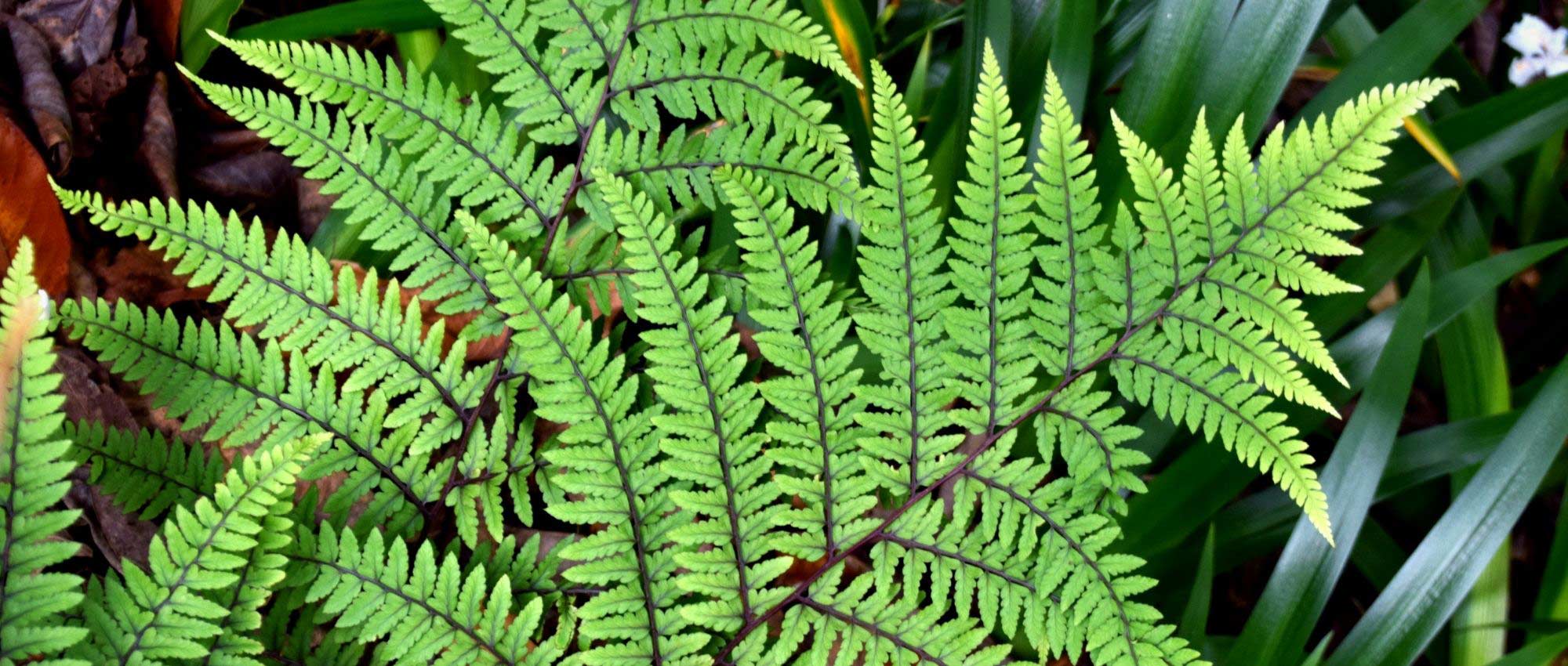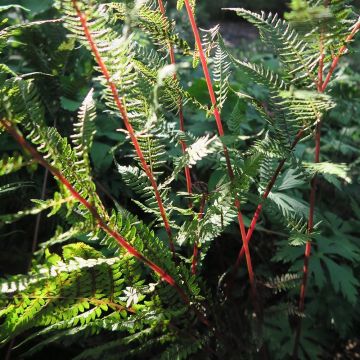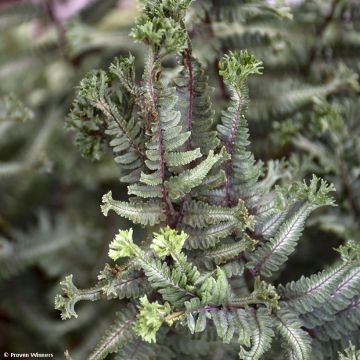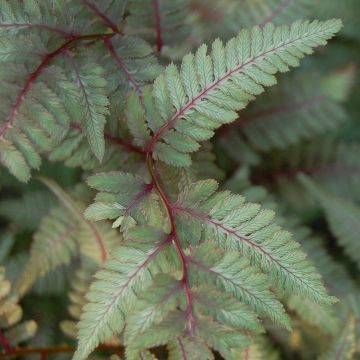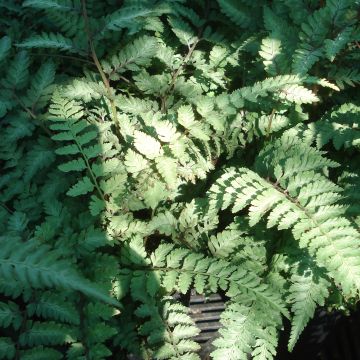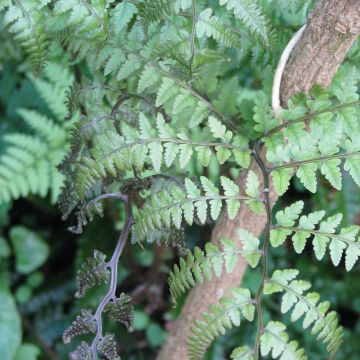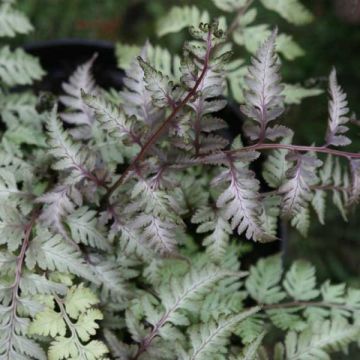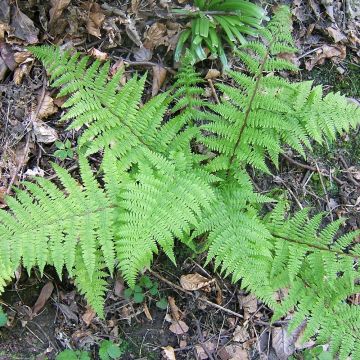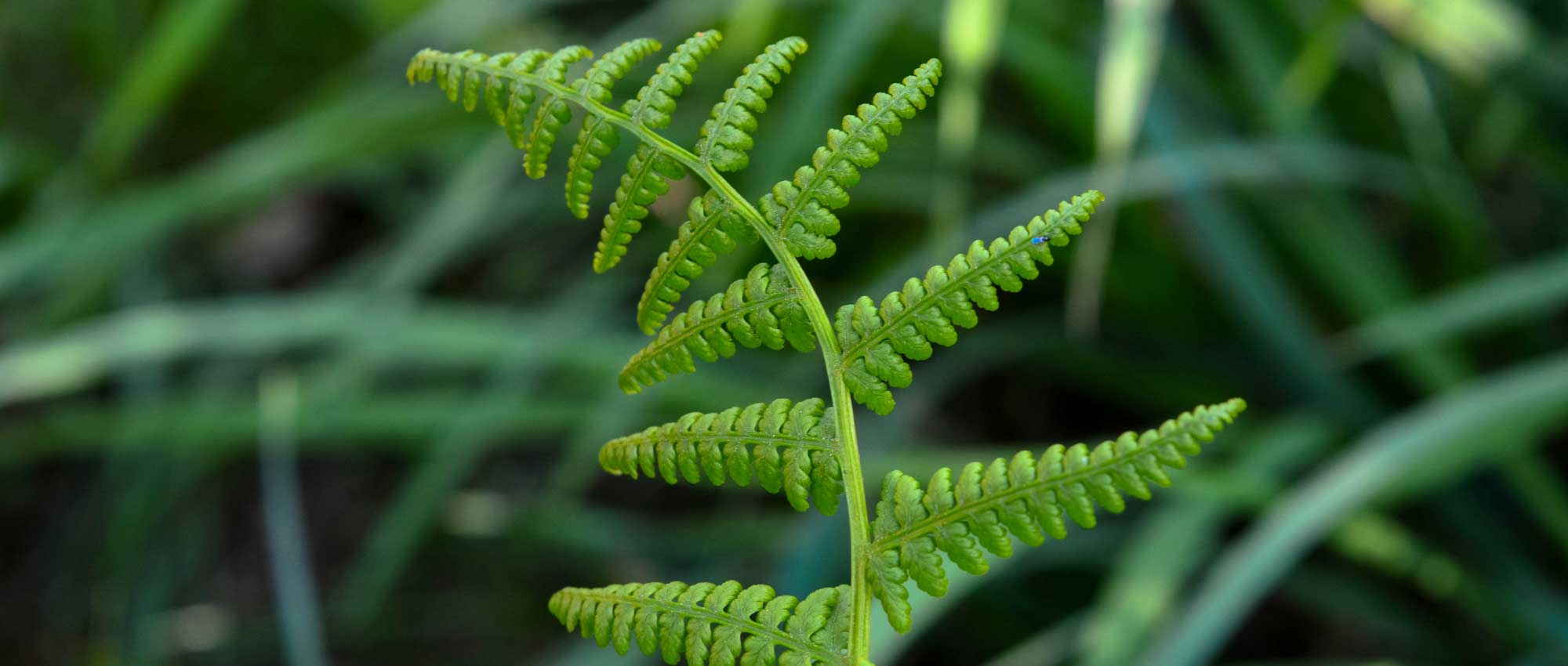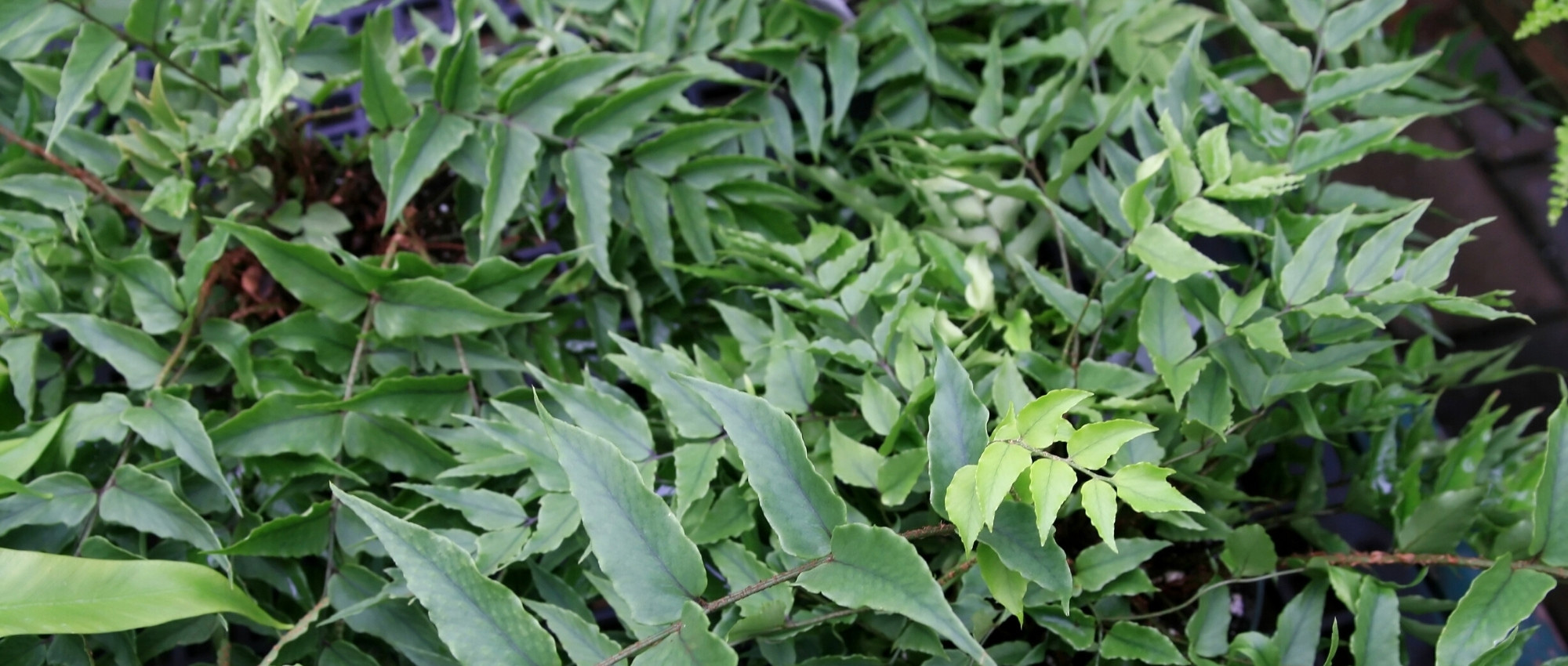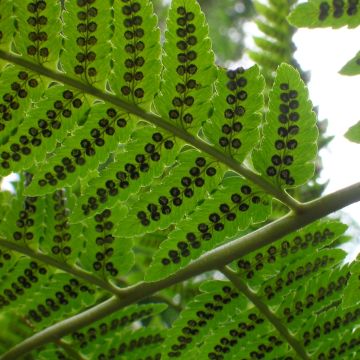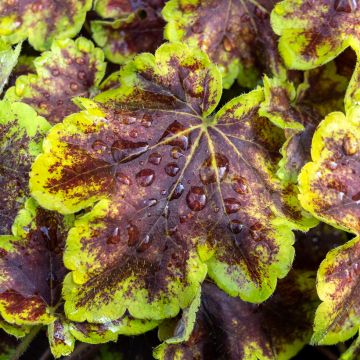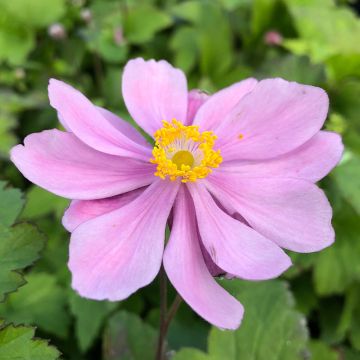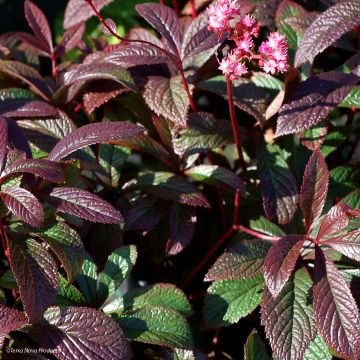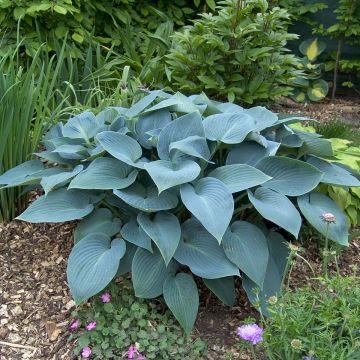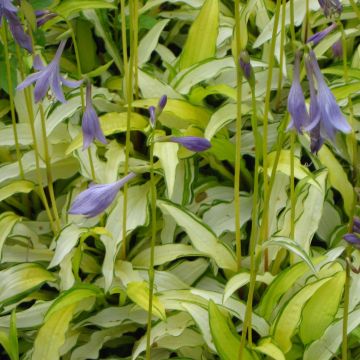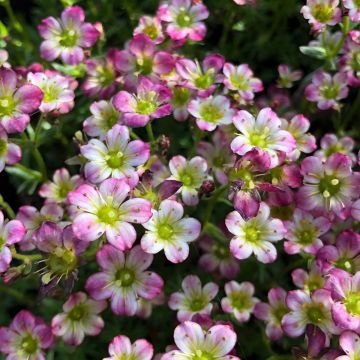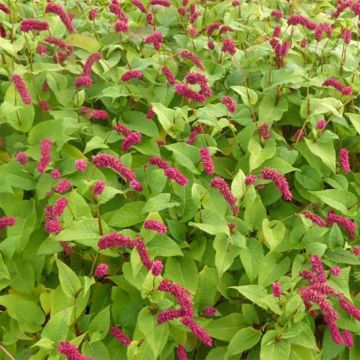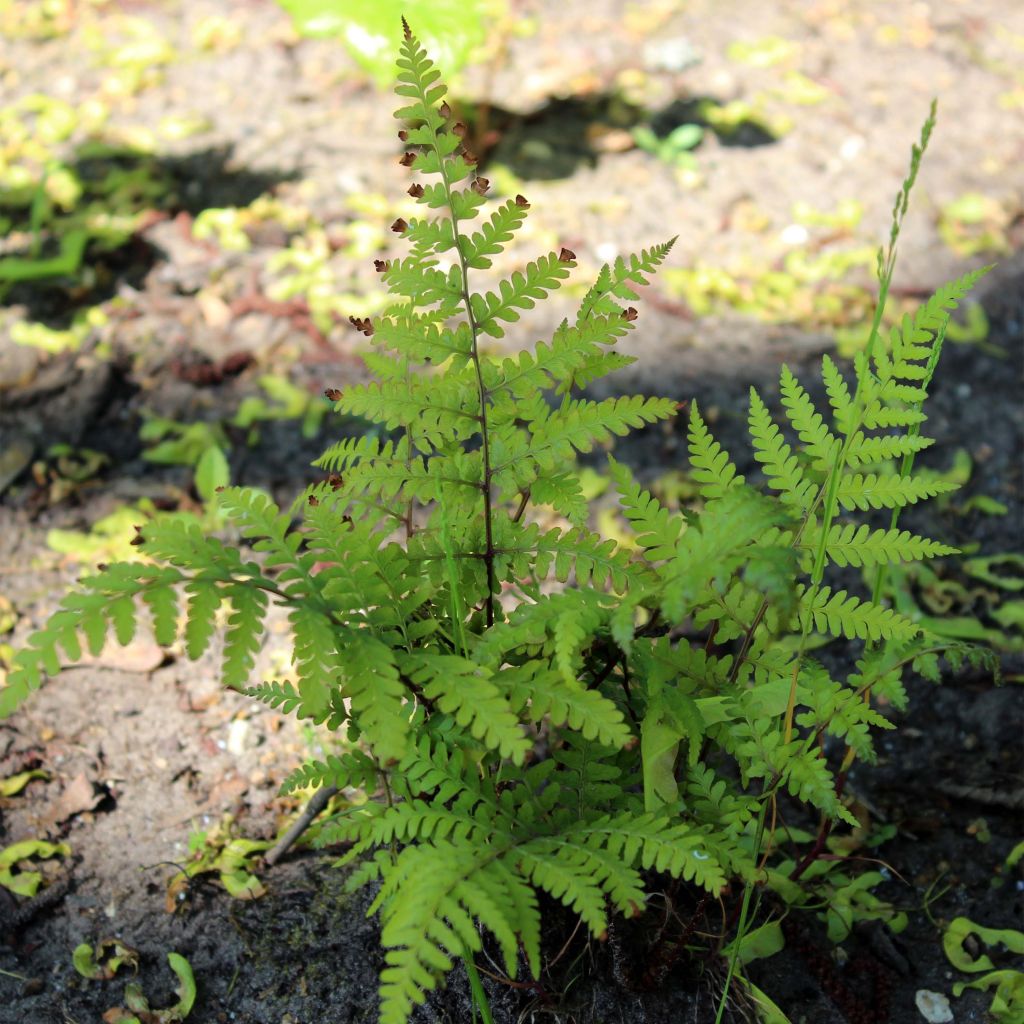

Athyrium vidalii - Lady Fern
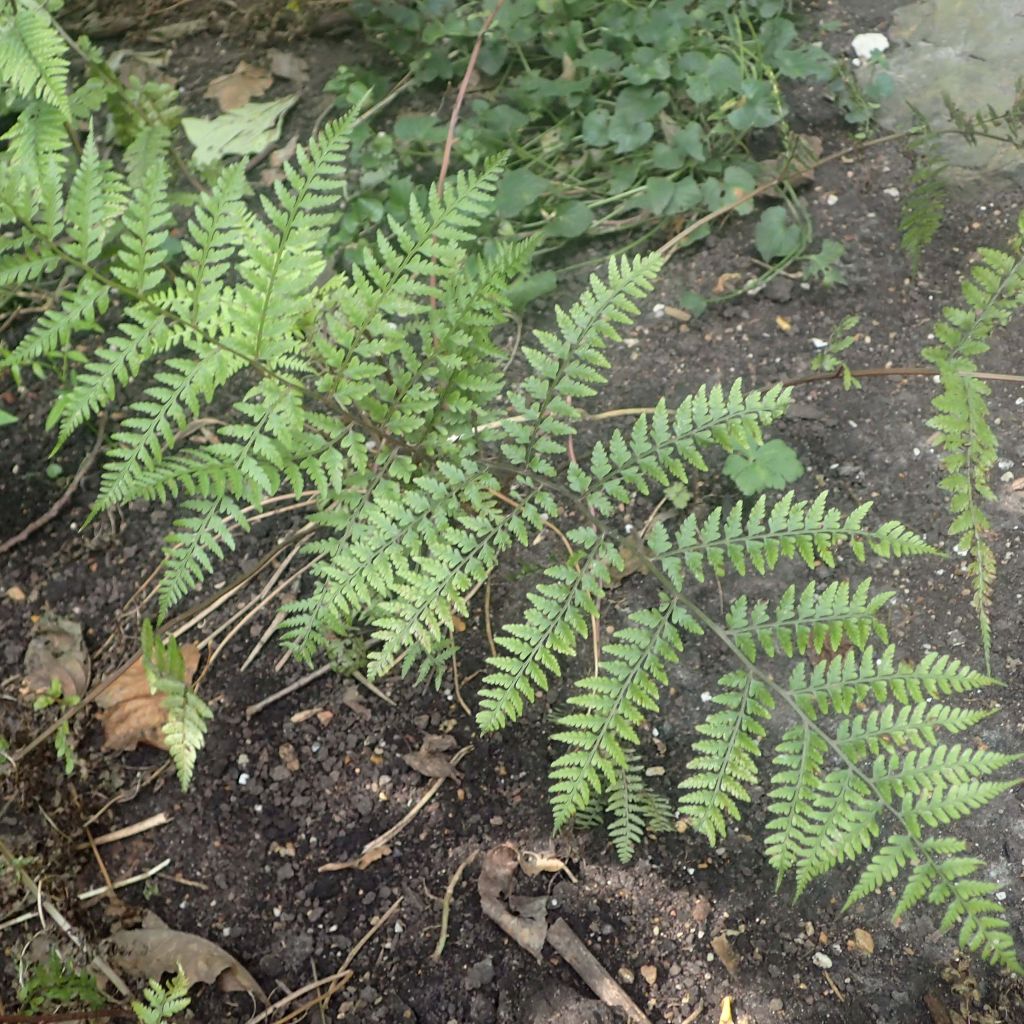

Athyrium vidalii - Lady Fern
Athyrium vidalii - Lady Fern
Athyrium vidalii
Lady Fern
I am delighted! Despite a little disappointment upon arrival as only a few shoots emerged from the ground. They have finally, in 2 months, settled and developed perfectly. One is in total shade, the other gets a few hours of sunlight in the morning, both are growing at an equal pace and are in excellent condition.
Loriane, 14/06/2020
Special offer!
Receive a €20 voucher for any order over €90 (excluding delivery costs, credit notes, and plastic-free options)!
1- Add your favorite plants to your cart.
2- Once you have reached €90, confirm your order (you can even choose the delivery date!).
3- As soon as your order is shipped, you will receive an email containing your voucher code, valid for 3 months (90 days).
Your voucher is unique and can only be used once, for any order with a minimum value of €20, excluding delivery costs.
Can be combined with other current offers, non-divisible and non-refundable.
Home or relay delivery (depending on size and destination)
Schedule delivery date,
and select date in basket
This plant carries a 12 months recovery warranty
More information
We guarantee the quality of our plants for a full growing cycle, and will replace at our expense any plant that fails to recover under normal climatic and planting conditions.
Would this plant suit my garden?
Set up your Plantfit profile →
Description
Athyrium vidalii is a rarely cultivated Asian species, beautifully coloured and particularly striking in shaded areas of the garden: its young shoots, called croziers, are strongly tinged with red-violet and unfold into golden juvenile fronds with red veins, among mature fronds that have turned green and red. This species is deciduous and very hardy, with a small size that allows it to be adopted even in small spaces, for example in a small shaded bed or near a water feature.
Athyrium vidalii is a lady fern native to wooded areas, valleys, and riverbanks in Japan, China, and Korea. Related to the Japanese fern Athyrium japonicum, it was discovered only about ten years ago. Like all so-called 'lady ferns', it belongs to the family of Athyriaceae.
Anchored on upright and ascending rhizomes, the plant forms a spreading clump, almost as wide as it is tall, reaching a height of no more than 60-70 cm (24-28in), with a fairly slow growth rate. In spring, wine-red croziers covered with almost black scales appear. They unfurl and elongate rapidly, releasing finely cut triangular fronds ranging from yellow-green to golden. They grow and mature gracefully, becoming greener, speckled with red, and slightly arching, supported a structure of vibrant burgundy red petioles, rachis, and veins. This fern is deciduous, its autumn foliage turning golden yellow before disappearing in winter.
All ferns in the Athyrium genus completely lose their foliage in winter. That being said, they are very cold-resistant, often have remarkably delicate fronds, and are very easy to grow in any moist soil enriched with leaf compost. Athyrium vidalii thrives in cool and even humid environments: near a pond or in a very moist area of the garden, which is not always easy to plant. In a Japanese garden, it will look great in a damp and shaded rockery or as a border for a less sunny pathway. This unusual fern deserves to be cultivated prominently, among a few well-chosen perennial plants such as Brunnera macrophylla 'Dawson's White', candelabra primroses, Rodgersia, or even arums. It also makes a good companion for Corydalis, bleeding hearts, and why not the mythical Himalayan blue poppies (Meconopsis)...
Athyrium vidalii - Lady Fern in pictures
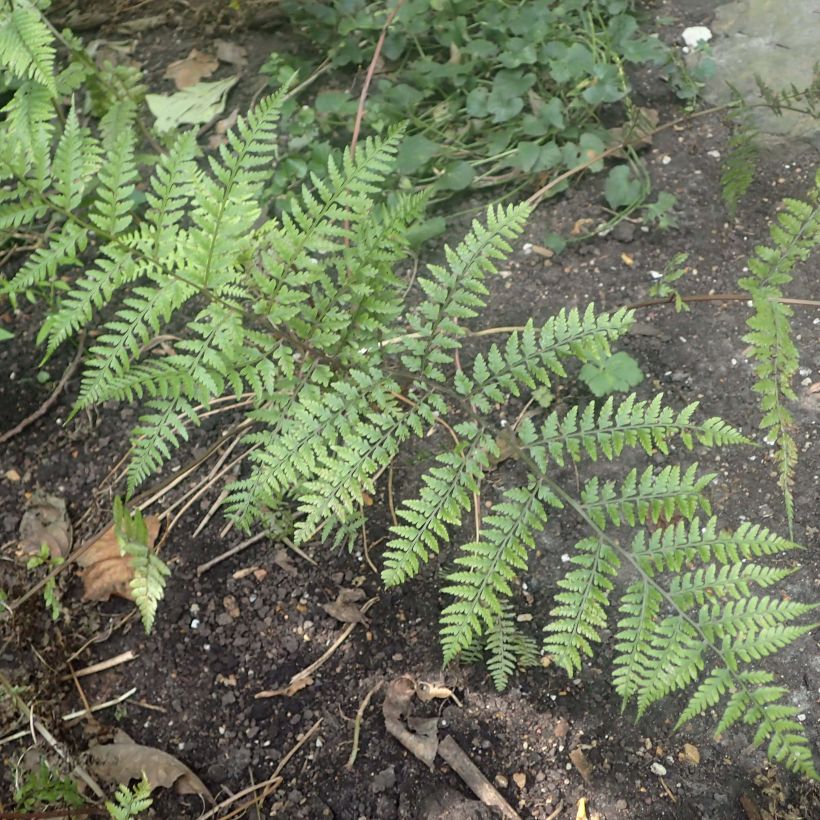

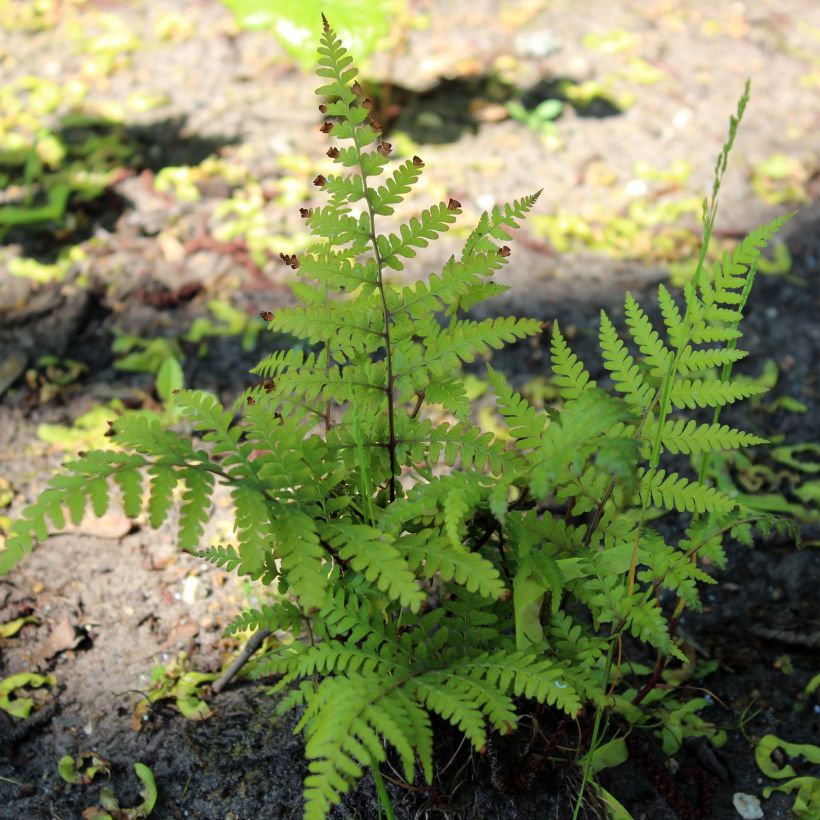

Foliage
Plant habit
Botanical data
Athyrium
vidalii
Athyriaceae (Dryopteridaceae)
Lady Fern
Southeast Asia
Other Athyrium
View all →Planting and care
Athyrium vidalii is easy to grow in regions where atmospheric humidity is abundant, in a soil rich in humus, non-calcareous, light, and always remaining damp, even moist. It dislikes calcareous and heavy soils and cannot tolerate any drought. In case of drought or insufficient humidity, its foliage withers and appears burnt. Remove the browned or dried fronds at the end of winter, when vegetation begins to regrow.
Planting period
Intended location
Care
Planting & care advice
-
, onOrder confirmed
Reply from on Promesse de fleurs
Similar products
Haven't found what you were looking for?
Hardiness is the lowest winter temperature a plant can endure without suffering serious damage or even dying. However, hardiness is affected by location (a sheltered area, such as a patio), protection (winter cover) and soil type (hardiness is improved by well-drained soil).

Photo Sharing Terms & Conditions
In order to encourage gardeners to interact and share their experiences, Promesse de fleurs offers various media enabling content to be uploaded onto its Site - in particular via the ‘Photo sharing’ module.
The User agrees to refrain from:
- Posting any content that is illegal, prejudicial, insulting, racist, inciteful to hatred, revisionist, contrary to public decency, that infringes on privacy or on the privacy rights of third parties, in particular the publicity rights of persons and goods, intellectual property rights, or the right to privacy.
- Submitting content on behalf of a third party;
- Impersonate the identity of a third party and/or publish any personal information about a third party;
In general, the User undertakes to refrain from any unethical behaviour.
All Content (in particular text, comments, files, images, photos, videos, creative works, etc.), which may be subject to property or intellectual property rights, image or other private rights, shall remain the property of the User, subject to the limited rights granted by the terms of the licence granted by Promesse de fleurs as stated below. Users are at liberty to publish or not to publish such Content on the Site, notably via the ‘Photo Sharing’ facility, and accept that this Content shall be made public and freely accessible, notably on the Internet.
Users further acknowledge, undertake to have ,and guarantee that they hold all necessary rights and permissions to publish such material on the Site, in particular with regard to the legislation in force pertaining to any privacy, property, intellectual property, image, or contractual rights, or rights of any other nature. By publishing such Content on the Site, Users acknowledge accepting full liability as publishers of the Content within the meaning of the law, and grant Promesse de fleurs, free of charge, an inclusive, worldwide licence for the said Content for the entire duration of its publication, including all reproduction, representation, up/downloading, displaying, performing, transmission, and storage rights.
Users also grant permission for their name to be linked to the Content and accept that this link may not always be made available.
By engaging in posting material, Users consent to their Content becoming automatically accessible on the Internet, in particular on other sites and/or blogs and/or web pages of the Promesse de fleurs site, including in particular social pages and the Promesse de fleurs catalogue.
Users may secure the removal of entrusted content free of charge by issuing a simple request via our contact form.
The flowering period indicated on our website applies to countries and regions located in USDA zone 8 (France, the United Kingdom, Ireland, the Netherlands, etc.)
It will vary according to where you live:
- In zones 9 to 10 (Italy, Spain, Greece, etc.), flowering will occur about 2 to 4 weeks earlier.
- In zones 6 to 7 (Germany, Poland, Slovenia, and lower mountainous regions), flowering will be delayed by 2 to 3 weeks.
- In zone 5 (Central Europe, Scandinavia), blooming will be delayed by 3 to 5 weeks.
In temperate climates, pruning of spring-flowering shrubs (forsythia, spireas, etc.) should be done just after flowering.
Pruning of summer-flowering shrubs (Indian Lilac, Perovskia, etc.) can be done in winter or spring.
In cold regions as well as with frost-sensitive plants, avoid pruning too early when severe frosts may still occur.
The planting period indicated on our website applies to countries and regions located in USDA zone 8 (France, United Kingdom, Ireland, Netherlands).
It will vary according to where you live:
- In Mediterranean zones (Marseille, Madrid, Milan, etc.), autumn and winter are the best planting periods.
- In continental zones (Strasbourg, Munich, Vienna, etc.), delay planting by 2 to 3 weeks in spring and bring it forward by 2 to 4 weeks in autumn.
- In mountainous regions (the Alps, Pyrenees, Carpathians, etc.), it is best to plant in late spring (May-June) or late summer (August-September).
The harvesting period indicated on our website applies to countries and regions in USDA zone 8 (France, England, Ireland, the Netherlands).
In colder areas (Scandinavia, Poland, Austria...) fruit and vegetable harvests are likely to be delayed by 3-4 weeks.
In warmer areas (Italy, Spain, Greece, etc.), harvesting will probably take place earlier, depending on weather conditions.
The sowing periods indicated on our website apply to countries and regions within USDA Zone 8 (France, UK, Ireland, Netherlands).
In colder areas (Scandinavia, Poland, Austria...), delay any outdoor sowing by 3-4 weeks, or sow under glass.
In warmer climes (Italy, Spain, Greece, etc.), bring outdoor sowing forward by a few weeks.






























